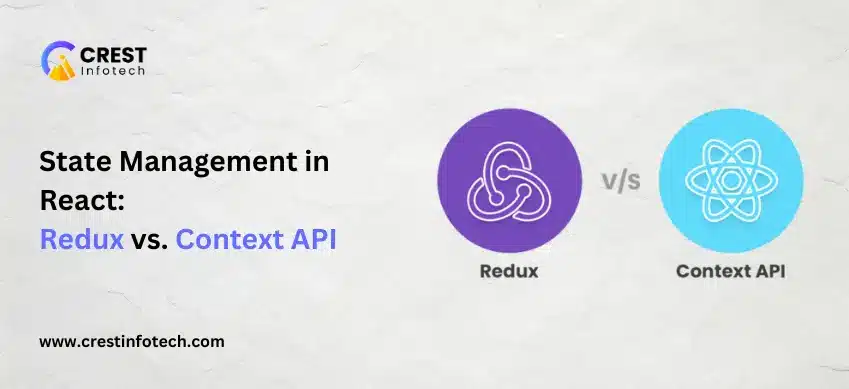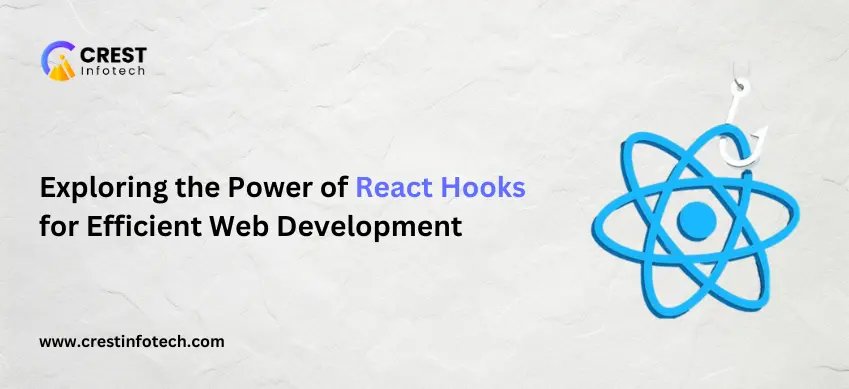November 07, 2024 By Rakshit Patel
As React applications grow in complexity, managing state across multiple components becomes more challenging. Simple state management with useState works well for small components, but as your app scales, you may need more advanced techniques to manage state in a clear, maintainable way. Two of the most powerful patterns for managing complex state in React are Context and Reducers.
In this article, we’ll explore how to use React’s useContext and useReducer hooks together, allowing you to build scalable and flexible state management solutions. We’ll also explore custom hooks and best practices to handle shared and global state across components.
Why Use Context and Reducers?
The Limitations of useState
useState is great for local state in simple components, but as you build larger applications, you may need to share state between multiple components. Passing state down through props can quickly become unwieldy, especially if you’re dealing with deeply nested components (often referred to as “prop drilling”). For more complex applications, prop drilling becomes difficult to manage, leading to tightly coupled components and making your app harder to maintain.
The Power of Context and Reducers
By combining useContext and useReducer, you can create a powerful, centralized state management system without the need for external libraries like Redux. Context allows you to make state available globally, while useReducer provides a structured way to handle complex state updates through actions and reducers.
When to Use Context and Reducers
- Complex State Logic: When you have complex state transitions or multiple interdependent pieces of state,
useReducer provides a clear way to manage state changes.
- Shared or Global State: When multiple components need to access or update the same state,
useContext allows you to easily share state across your app.
Setting Up Context and Reducers
Let’s walk through an example of how to use useContext and useReducer together in a React application. We’ll create a global state management system to handle a shopping cart.
1. Setting Up the Reducer
The first step is to define a reducer function. A reducer is a function that takes the current state and an action, and returns the new state based on the action type.
const cartReducer = (state, action) => {
switch (action.type) {
case 'ADD_ITEM':
return {
...state,
items: [...state.items, action.payload]
};
case 'REMOVE_ITEM':
return {
...state,
items: state.items.filter(item => item.id !== action.payload.id)
};
case 'CLEAR_CART':
return {
...state,
items: []
};
default:
return state;
}
};
In this example, we handle three types of actions:
ADD_ITEM: Adds a new item to the cart.REMOVE_ITEM: Removes an item by its id.CLEAR_CART: Empties the cart.
2. Creating a Context
Next, we create a CartContext to provide the cart state and dispatch function to our components.
import React, { createContext, useReducer } from ‘react’;
// Initial state
const initialState = {
items: []
};
// Create context
export const CartContext = createContext();
// Cart provider component
export const CartProvider = ({ children }) => {
const [state, dispatch] = useReducer(cartReducer, initialState);
return (
<CartContext.Provider value={{ state, dispatch }}>
{children}
</CartContext.Provider>
);
};
Here, we initialize the CartContext and use the CartProvider component to wrap our application and provide the cart state and dispatch function to any child components.
3. Consuming Context in Components
Now that we have our context and reducer set up, we can use them in any component that needs access to the cart state or needs to dispatch actions.
Adding Items to the Cart
import React, { useContext } from 'react';
import { CartContext } from './CartContext';
const Product = ({ product }) => {
const { dispatch } = useContext(CartContext);
const addToCart = () => {
dispatch({ type: 'ADD_ITEM', payload: product });
};
return (
<div>
<h2>{product.name}</h2>
<button onClick={addToCart}>Add to Cart</button>
</div>
);
};
export default Product;
In this Product component, we use useContext to access the dispatch function from CartContext and trigger an action to add an item to the cart.
Displaying Cart Items
import React, { useContext } from 'react';
import { CartContext } from './CartContext';
const Cart = () => {
const { state } = useContext(CartContext);
return (
<div>
<h1>Your Cart</h1>
{state.items.map(item => (
<div key={item.id}>
<p>{item.name}</p>
<p>{item.price}</p>
</div>
))}
</div>
);
};
export default Cart;
Advanced React Patterns: Managing Complex State with Context and Reducers
As React applications grow in complexity, managing state across multiple components becomes more challenging. Simple state management with useState works well for small components, but as your app scales, you may need more advanced techniques to manage state in a clear, maintainable way. Two of the most powerful patterns for managing complex state in React are Context and Reducers.
In this article, we’ll explore how to use React’s useContext and useReducer hooks together, allowing you to build scalable and flexible state management solutions. We’ll also explore custom hooks and best practices to handle shared and global state across components.
Why Use Context and Reducers?
The Limitations of useState
useState is great for local state in simple components, but as you build larger applications, you may need to share state between multiple components. Passing state down through props can quickly become unwieldy, especially if you’re dealing with deeply nested components (often referred to as “prop drilling”). For more complex applications, prop drilling becomes difficult to manage, leading to tightly coupled components and making your app harder to maintain.
The Power of Context and Reducers
By combining useContext and useReducer, you can create a powerful, centralized state management system without the need for external libraries like Redux. Context allows you to make state available globally, while useReducer provides a structured way to handle complex state updates through actions and reducers.
When to Use Context and Reducers
- Complex State Logic: When you have complex state transitions or multiple interdependent pieces of state,
useReducer provides a clear way to manage state changes.
- Shared or Global State: When multiple components need to access or update the same state,
useContext allows you to easily share state across your app.
Setting Up Context and Reducers
Let’s walk through an example of how to use useContext and useReducer together in a React application. We’ll create a global state management system to handle a shopping cart.
1. Setting Up the Reducer
The first step is to define a reducer function. A reducer is a function that takes the current state and an action, and returns the new state based on the action type.
const cartReducer = (state, action) => {
switch (action.type) {
case 'ADD_ITEM':
return {
...state,
items: [...state.items, action.payload]
};
case 'REMOVE_ITEM':
return {
...state,
items: state.items.filter(item => item.id !== action.payload.id)
};
case 'CLEAR_CART':
return {
...state,
items: []
};
default:
return state;
}
};
In this example, we handle three types of actions:
ADD_ITEM: Adds a new item to the cart.REMOVE_ITEM: Removes an item by its id.CLEAR_CART: Empties the cart.
2. Creating a Context
Next, we create a CartContext to provide the cart state and dispatch function to our components.
import React, { createContext, useReducer } from 'react';
// Initial state
const initialState = {
items: []
};
// Create context
export const CartContext = createContext();
// Cart provider component
export const CartProvider = ({ children }) => {
const [state, dispatch] = useReducer(cartReducer, initialState);
return (
<CartContext.Provider value={{ state, dispatch }}>
{children}
</CartContext.Provider>
);
};
Here, we initialize the CartContext and use the CartProvider component to wrap our application and provide the cart state and dispatch function to any child components.
3. Consuming Context in Components
Now that we have our context and reducer set up, we can use them in any component that needs access to the cart state or needs to dispatch actions.
Adding Items to the Cart
import React, { useContext } from 'react';
import { CartContext } from './CartContext';
const Product = ({ product }) => {
const { dispatch } = useContext(CartContext);
const addToCart = () => {
dispatch({ type: 'ADD_ITEM', payload: product });
};
return (
<div>
<h2>{product.name}</h2>
<button onClick={addToCart}>Add to Cart</button>
</div>
);
};
export default Product;
In this Product component, we use useContext to access the dispatch function from CartContext and trigger an action to add an item to the cart.
Displaying Cart Items
import React, { useContext } from 'react';
import { CartContext } from './CartContext';
const Cart = () => {
const { state } = useContext(CartContext);
return (
<div>
<h1>Your Cart</h1>
{state.items.map(item => (
<div key={item.id}>
<p>{item.name}</p>
<p>{item.price}</p>
</div>
))}
</div>
);
};
export default Cart;
Here, the Cart component accesses the state from CartContext and maps through the items in the cart to display them.
4. Best Practices
Use Custom Hooks for Readability
You can further abstract the logic by creating custom hooks to simplify accessing and updating state. This improves readability and makes your components less coupled to context-specific logic.
import { useContext } from 'react';
import { CartContext } from './CartContext';
// Custom hook for using cart state
export const useCart = () => {
const { state } = useContext(CartContext);
return state;
};
// Custom hook for dispatching actions
export const useCartDispatch = () => {
const { dispatch } = useContext(CartContext);
return dispatch;
};
Now, you can use these hooks in your components:
const Cart = () => {
const cart = useCart();
return (
<div>
<h1>Your Cart</h1>
{cart.items.map(item => (
<div key={item.id}>
<p>{item.name}</p>
<p>{item.price}</p>
</div>
))}
</div>
);
};
Avoid Over-Rendering
Using useContext in deeply nested components can sometimes cause unnecessary re-renders. To prevent this, consider using the useMemo hook or breaking down large contexts into smaller, more focused ones. This helps ensure that only the necessary components re-render when the state changes.
Keeping the Reducer Simple
Keep your reducer functions simple and focused. For complex operations, consider using external helper functions or action creators to prevent cluttering the reducer logic. This keeps the reducer clean and easier to debug.
Conclusion
By combining useContext and useReducer, you can create a scalable and flexible state management solution for your React applications without relying on external libraries like Redux. This pattern allows you to share state across components, handle complex state updates, and improve code modularity.
Using custom hooks and best practices such as breaking down contexts or optimizing for performance helps keep your codebase clean and maintainable, even as your application grows. With Context and Reducers, React becomes a powerful tool for managing complex state while keeping your components functional and declarative.



